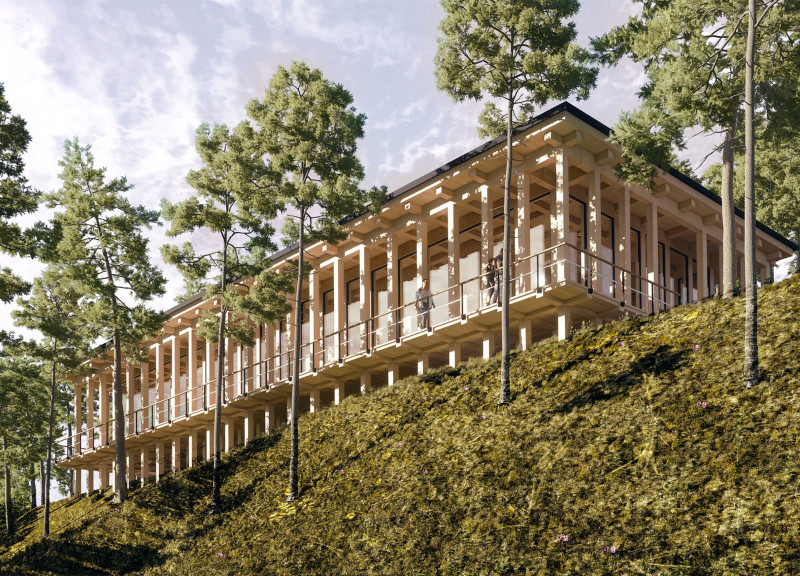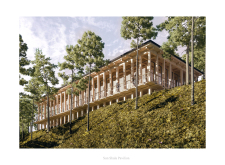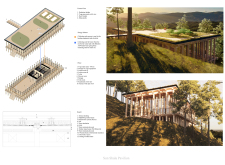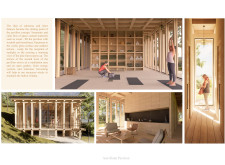5 key facts about this project
This architectural design effectively merges functionality with aesthetics, creating an environment that is both inviting and practical. The pavilion is purposefully designed to accommodate various activities, featuring a spacious main area suitable for yoga and group sessions, complemented by ancillary spaces such as locker facilities and storage areas. The local climate and the pavilion's orientation have been carefully considered, ensuring that users benefit from natural light and cross-ventilation, enhancing their comfort throughout their visit.
The structure is elevated, allowing for an unobstructed view of the surrounding landscape. This strategic elevation minimizes disturbance to the natural setting while maximizing the visual excitement of the forest scenery. The use of extensive glass panels allows for transparency and continuity between indoor and outdoor environments, encouraging users to feel connected to the landscape even while within the structure. The roof terrace, an essential component of the design, serves as an additional space for yoga, social gatherings, or simply enjoying nature.
In terms of materiality, the Sun Shala Pavilion employs a thoughtful selection of natural materials that align with its purpose and setting. Primarily constructed of wood, the pavilion evokes a sense of warmth and comfort, effectively blending with the forest backdrop. A significant amount of glass is utilized throughout, strategically placed to enhance the flow of natural light while ensuring panoramic views of the exterior. The incorporation of thermal insulation materials enables energy efficiency, crucial for minimizing the pavilion's environmental impact.
Unique design approaches within the project are evident in its commitment to sustainability. Features such as solar panels and rainwater harvesting systems reflect an awareness of ecological concerns. By integrating these technologies, the design not only serves its users but also contributes to a broader dialogue on sustainable architecture. This underscores the idea that architecture can play an essential role in addressing environmental issues while providing functional spaces for communities.
The overall layout of the Sun Shala Pavilion emphasizes harmony and balance, with a clear organization of spaces that promotes a sense of calm and order. The symmetry found within the structure serves to create visual continuity and encourages relaxation among its users. The combination of solid and transparent materials adds depth and complexity to the design, allowing for interactions between users and the surrounding environment.
This architectural project stands out not only for its aesthetic qualities but also for its thoughtful integration of natural elements and commitment to sustainability. By centering the experience of nature and wellness, the Sun Shala Pavilion becomes more than just a building; it transforms into a community hub that nurtures social bonds and individual resilience.
For further insights into this compelling architectural design, including detailed architectural plans, sections, and innovative ideas, readers are encouraged to explore the project's presentation. Engaging with this additional content can provide a deeper understanding of the design decisions and the thoughtful execution that characterizes the Sun Shala Pavilion.


























